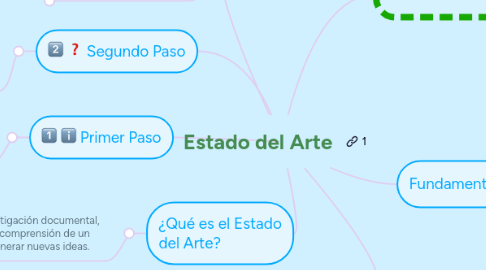Estado del Arte
by Angelica Medinilla


1. ¿Qué es el Estado del Arte?
1.1. Es una investigación documental, que permite la comprensión de un fenómeno y generar nuevas ideas.
2. Segundo Paso
2.1. El investigador se pregunta, desde el inicio de su trabajo: ¿Qué se ha dicho? ¿Cómo se ha dicho? ¿A quién se ha dicho?
3. Inicio del Estado del Arte
3.1. Tema / Problema
3.1.1. Antecedentes
3.1.1.1. Fuentes
3.1.1.1.1. Experiencia
4. Tercer Paso
4.1. Encontrar vacíos
4.1.1. ¿Quiénes investigaron? ¿Qué tanto investigaron? ¿Qué falta abordar? Dimensiones y logros
5. Primer Paso
5.1. Investigador asume postura crítica para evitar duplicar esfuerzos y contribuir a generar nuevos problemas.
6. Delimitar un problema específico
6.1. Open the Theme menu from the bottom of your map editor to change your map theme
6.2. Create a presentation of your mind map by clicking the presentation icon in the bottom left corner of your screen
6.2.1. Simply hold down COMMAND i.e. CTRL and Click & Drag to create a slide for one or multiple topics
6.2.2. Set transitions for your slides
6.2.3. Click "Start Slideshow" to view your presentation
6.3. Open the Sharing Settings from the bottom of your map editor to share the map with a friend or publish it to the web
6.3.1. You can share your map with anyone via email
6.3.2. You can publish your map and enable anyone with an internet access to find it
6.3.3. You can embed your map on a blog or website
